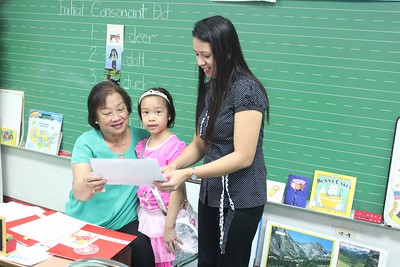Communication and Collaboration with Families
Learning Objectives
After this chapter, you should be able to:
- Define cultural competence.
- Cultivate cultural competence within the early childhood classroom.
- Communicate and collaborate with families from diverse backgrounds.

Cultural Competence
Cultural competence in education refers to the ability of educators to effectively understand, respect, and respond to the cultural backgrounds, beliefs, and experiences of students, families, and communities within diverse learning environments. This approach emphasizes the integration of culturally relevant teaching practices, equitable access to educational opportunities, and the promotion of positive cross-cultural interactions to support the academic, social, and emotional development of all learners. Suha Hamdan and Roland Sintos Coloma (2022) highlight cultural competence as a dynamic process that involves ongoing reflection, learning, and adaptation to meet the diverse needs of students. Similarly, the United States Department of Education underscores the importance of cultural competence in creating inclusive educational settings that empower students to succeed academically while fostering mutual respect and understanding among individuals from different cultural backgrounds.
Culturally Competent Early Childhood Classroom include:
- Diverse representation with classroom materials.
- Embraces all languages that are representative of home languages of families.
- Accessible for all children regardless of their abilities or cultural background.
- Respects and involves families’ cultural traditions, values, and beliefs in classroom activities and events.
Saida’s First Day
On Saida’s first day of preschool, her heart raced with excitement and nerves. Dressed in a vibrant hijab adorned with delicate patterns, she clutched her mother’s hand tightly as they approached the classroom door. The bustling sounds of children’s laughter and chatter filled the air, but for Saida, it was overwhelming. Saida spoke very little English and none of the children looked her. She was the only girl wearing a hijab. This was a new experience for Saida.
As they stepped into the colorful room, Saida’s eyes widened with wonder, but her smile wavered. The other children greeted her with curious stares, their words blending into an unintelligible buzz. Saida’s grasp on her mother’s hand tightened, her gaze darting nervously around the room.
Mrs. Ramirez, the preschool teacher, noticed Saida’s apprehension and approached them with a warm smile. Sensing Saida’s unease, Mrs. Ramirez knelt down to Saida’s eye level and greeted her in a gentle tone. “Assalamu Alaikum, Saida,” she said, using the few Arabic words she had learned for this special occasion. Saida’s eyes sparkled with recognition, and a small smile tugged at the corners of her lips.
With Mrs. Ramirez’s encouragement, Saida tentatively let go of her mother’s hand and began to explore the classroom. She gravitated towards a corner filled with books, her fingers tracing the spines as she whispered softly to herself in Arabic. Mrs. Ramirez observed Saida’s interest and approached her with a book featuring diverse characters wearing hijabs, offering it to her with a warm smile.
Throughout the day, Mrs. Ramirez made extra efforts to include Saida in activities and conversations, using simple English words and gestures to help her feel more comfortable. Saida’s classmates, initially curious but now understanding, eagerly included her in their games and artwork, bridging the gap with smiles and shared laughter.
By the end of the day, Saida’s hesitance had melted away, replaced by a newfound sense of belonging. As she waved goodbye to her mother, her hijab bobbing with each cheerful gesture, Saida’s heart swelled with excitement for the adventures that awaited her in her new preschool home. And as Mrs. Ramirez watched Saida’s radiant smile light up the room, she knew that this was just the beginning of a beautiful journey of learning, friendship, and cultural understanding for everyone in her classroom.
In this story, Mrs. Ramirez took the time to learn some Arabic, get books that represent Saida’s culture, and made an effort throughout the day to ensure Saida was included with the activities. Being culturally responsive is intentional and involves effort to make sure every child (and their families) feel welcome in the classroom.
Cultural Responsive Classroom
